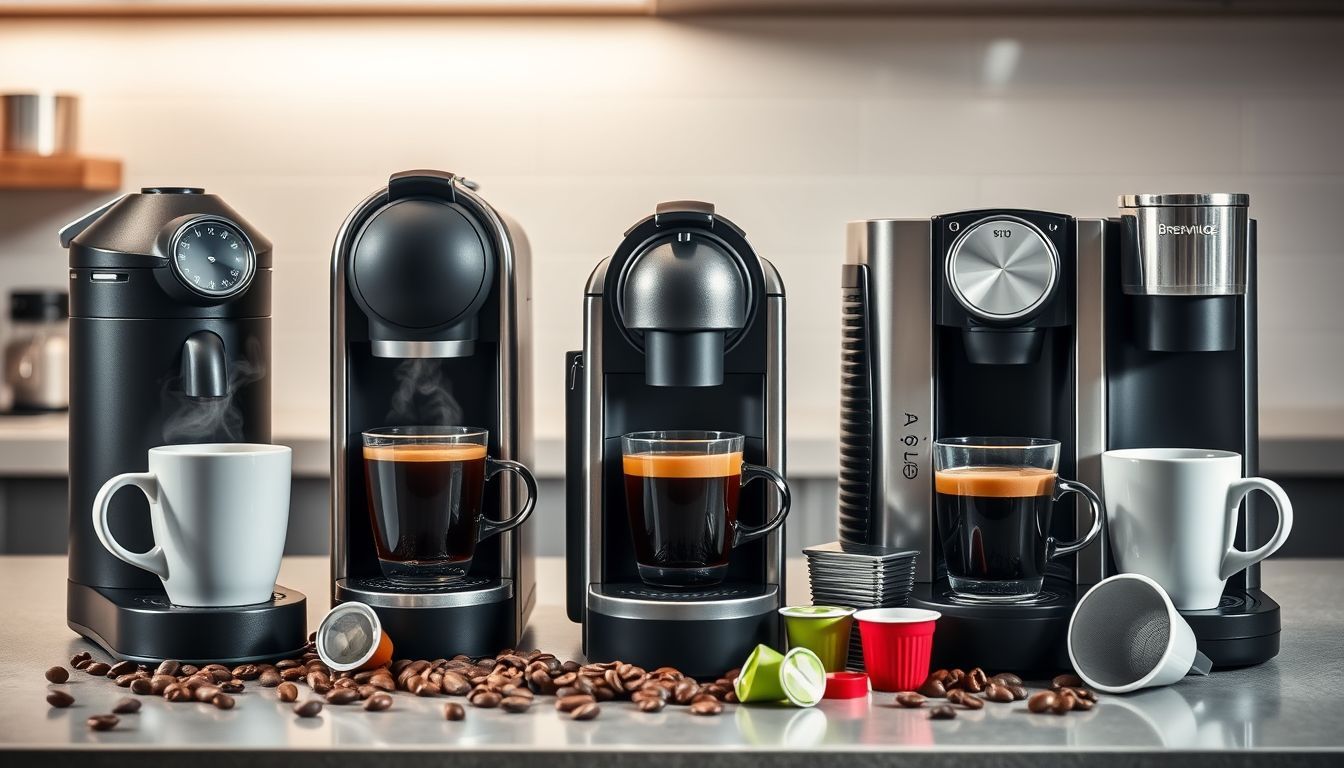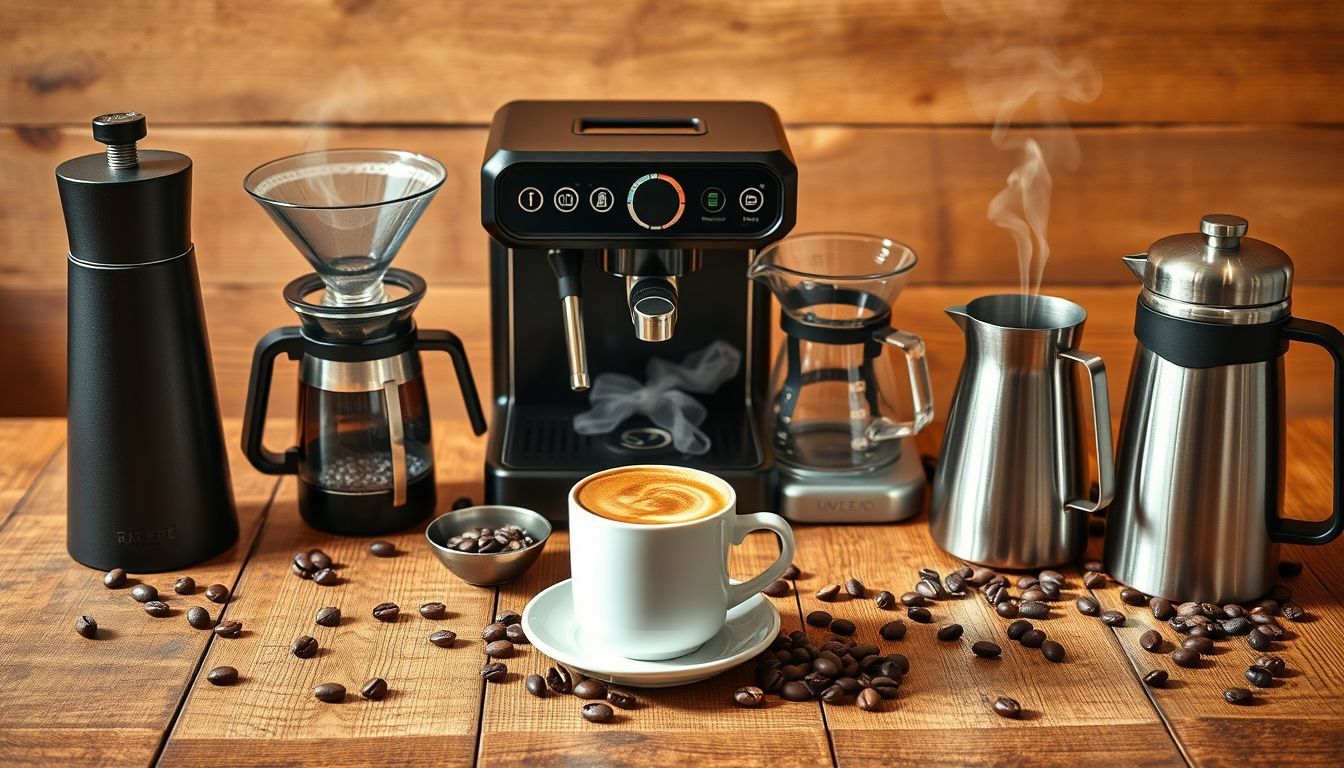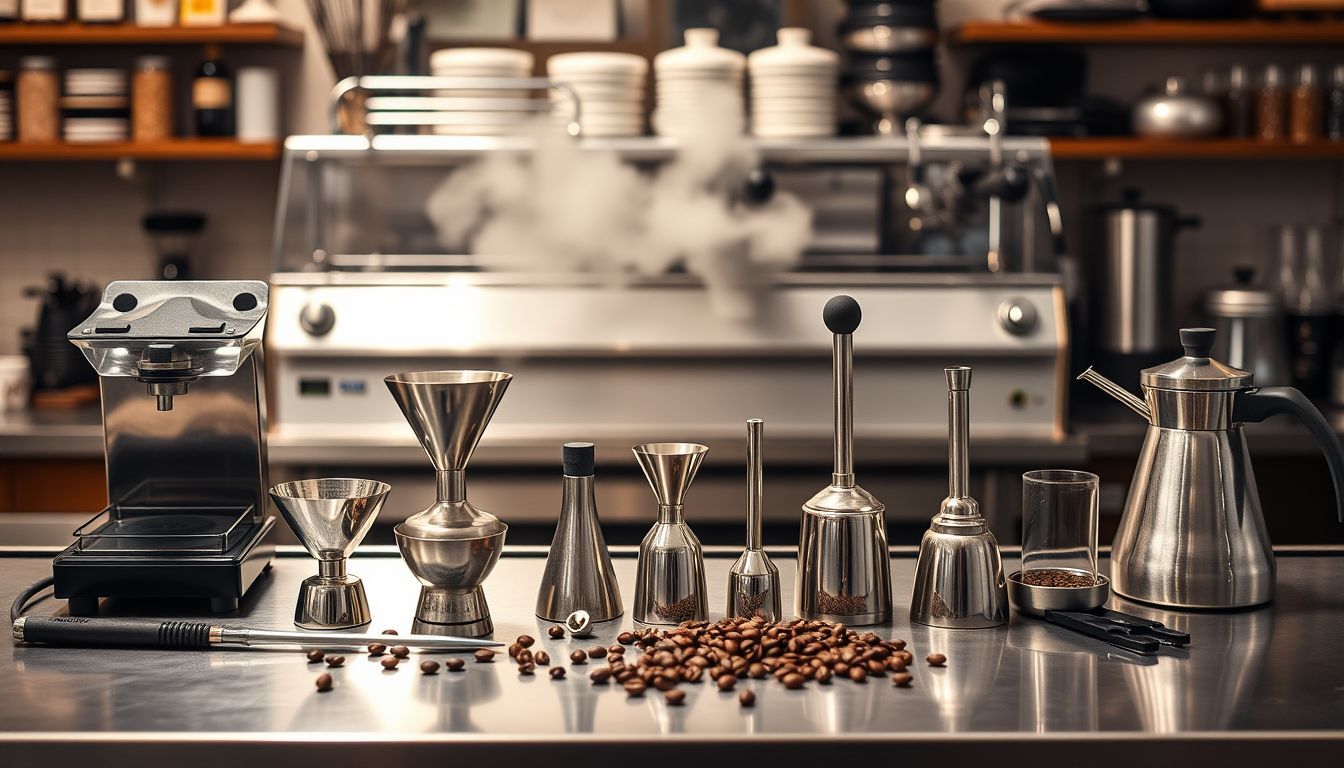Single Serve Coffee Makers That Don't Taste Like Cardboard
Most single-serve coffee makers produce liquid disappointment in convenient packaging. Here are the rare machines that actually brew decent coffee without the ceremony of manual methods.

Single Serve Coffee Makers That Don't Taste Like Cardboard
Let's address the elephant in the room: single-serve coffee makers have a reputation problem, and frankly, they've earned it. For every person who swears by their pod machine's convenience, there are three coffee enthusiasts who'd rather drink gas station coffee than subject themselves to the watery, bitter disappointment that most single-serve machines produce.
As someone who's spent over a decade analyzing coffee equipment and watching the single-serve market evolve from Keurig's early dominance to today's fragmented landscape, I can tell you that the reputation is largely deserved. Most single-serve machines are engineered for convenience first, profit second, and coffee quality... well, somewhere around seventh, right after "makes satisfying beeping sounds."
But here's the plot twist that keeps me employed: buried beneath the mountain of mediocre machines are a few genuine gems that prove single-serve coffee doesn't have to taste like it was filtered through a gym sock. These machines understand that convenience and quality aren't mutually exclusive—they just require better engineering and a willingness to prioritize coffee over quarterly profits.
The single-serve market is worth $4.2 billion annually, with over 40% of American households owning at least one pod-based machine. That's a lot of people settling for subpar coffee in the name of convenience. But it doesn't have to be this way.
The Single-Serve Paradox: Why Most Machines Fail
The Engineering Compromises
Single-serve machines face unique challenges that traditional coffee makers don't. They need to heat water quickly, extract coffee in under two minutes, work with pre-packaged pods, and do it all while keeping costs low enough for mass market appeal.
Most manufacturers solve these challenges by making compromises that destroy coffee quality:
Insufficient Water Temperature: Many machines brew at 180-185°F instead of the optimal 195-205°F to speed up heating and reduce energy costs.
Inadequate Contact Time: Rushing water through coffee in 30-45 seconds doesn't allow proper extraction, resulting in weak, sour coffee.
Poor Water Distribution: Single-point injection creates channeling, where water finds the easiest path through the coffee, leaving much of it under-extracted.
Pressure Problems: Most machines use gravity or minimal pressure, unlike espresso machines that use 9 bars or pour-over methods that rely on controlled flow.
The Pod Problem
The coffee industry's dirty secret is that most pods contain coffee that was mediocre before it was sealed in plastic. Pre-ground coffee loses flavor rapidly, and the economics of pod production incentivize using cheap, over-roasted beans that can mask staleness.
The Math of Mediocrity:
- Pod coffee costs $40-60 per pound equivalent
- Most pods contain 8-12g of coffee worth $0.30-0.50
- The remaining cost goes to packaging, marketing, and profit
- Result: Terrible coffee at premium prices
The Convenience Trap
Consumers buy single-serve machines for convenience, then get trapped in an ecosystem of expensive, mediocre pods. The sunk cost fallacy keeps them using inferior coffee rather than admitting the system doesn't work.
What Makes a Single-Serve Machine Actually Good
The Non-Negotiables
Proper Brewing Temperature: Must reach and maintain 195-205°F
Adequate Contact Time: Minimum 2-3 minutes for proper extraction
Even Water Distribution: Multiple injection points or shower head design
Pressure Control: Either high pressure (espresso-style) or controlled flow
Fresh Coffee Options: Ability to use your own coffee, not just pods
The Advanced Features That Matter
Temperature Control: Adjustable brewing temperature for different coffee types
Brew Strength Options: Multiple extraction settings
Cup Size Flexibility: Various volume options without diluting coffee
Pre-Infusion: Wetting coffee before full extraction begins
Quality Materials: Food-grade components that don't impart flavors
The Champions: Machines That Actually Brew Coffee
Technivorm Moccamaster Cup-One ($200-250): The Pour-Over Purist
The Philosophy: What if we made a single-serve machine that brews like a proper pour-over?
How It Works: Uses Technivorm's proven brewing technology in single-serve format. Water heats to optimal temperature, then distributes evenly over coffee through a shower head design.
Performance Analysis: This machine produces coffee that rivals manual pour-over methods. The brewing temperature is precise, contact time is adequate, and water distribution is excellent.
Pros:
- Exceptional coffee quality
- Uses regular ground coffee
- Precise temperature control
- Durable construction
- No proprietary pods required
Cons:
- Higher price point
- Slower brewing (4-6 minutes)
- Requires paper filters
- Limited convenience features
Best For: Coffee purists who want single-serve convenience without compromising quality.
Nespresso Vertuo Plus ($150-200): The Espresso Evolution
The Innovation: Centrifusion technology spins pods at 7,000 RPM while injecting water, creating crema and improving extraction.
How It Works: Barcode on each pod tells the machine optimal brewing parameters. High-speed rotation creates turbulence that improves extraction efficiency.
Performance Reality: Produces legitimate espresso with proper crema. The centrifusion technology actually works, creating better extraction than traditional pod machines.
Pros:
- Excellent espresso quality
- Automatic optimization per pod
- Creates real crema
- Multiple cup sizes
- Sleek design
Cons:
- Locked into Nespresso ecosystem
- Pod costs are high
- Limited coffee variety
- Proprietary technology
Best For: Espresso lovers who prioritize convenience and don't mind premium pod costs.
Keurig K-Elite with My K-Cup ($120-150): The Redemption Story
The Surprise: When used with the reusable My K-Cup filter and quality coffee, the K-Elite produces surprisingly decent coffee.
How It Works: Strong brew setting increases contact time and extraction. Temperature control ensures proper brewing heat. The My K-Cup allows use of fresh, quality coffee.
Performance Assessment: With proper coffee and settings, this machine can produce acceptable coffee—a dramatic improvement over standard pod brewing.
Pros:
- Affordable entry point
- Uses fresh coffee with My K-Cup
- Multiple brew strengths
- Large water reservoir
- Wide pod compatibility
Cons:
- Still limited by basic design
- My K-Cup is messier than pods
- Build quality is adequate, not exceptional
- Default pods still taste terrible
Best For: Budget-conscious users willing to use fresh coffee instead of pods.
Ninja Specialty Coffee Maker ($100-130): The Versatility Champion
The Concept: One machine that does single-serve, full carafe, specialty drinks, and cold brew.
How It Works: Multiple brewing modes adjust temperature, contact time, and water distribution for different coffee styles. Fold-away frother handles milk drinks.
Performance Analysis: Jack-of-all-trades approach works surprisingly well. Single-serve coffee is significantly better than basic pod machines.
Pros:
- Multiple brewing options
- Uses ground coffee
- Built-in frother
- Good value proposition
- Flexible sizing
Cons:
- Complex interface
- Larger footprint
- Build quality concerns
- Not exceptional at any one thing
Best For: Users who want versatility and don't mind complexity.
Breville Bambino Plus ($200-250): The Espresso Purist
The Approach: Real espresso machine in compact, user-friendly format.
How It Works: 15-bar pressure, precise temperature control, automatic milk frothing. Uses ground coffee or ESE pods.
Performance Excellence: Produces legitimate espresso that rivals full-size machines. Milk frothing is automatic but high-quality.
Pros:
- Real espresso quality
- Compact footprint
- Automatic milk frothing
- Uses ground coffee
- Professional-grade components
Cons:
- Learning curve required
- Higher maintenance
- Limited to espresso-based drinks
- More expensive
Best For: Espresso enthusiasts who want café-quality drinks at home.
The Disappointing Alternatives: What to Avoid
Standard Keurig Models
The Problem: Designed for speed and profit, not coffee quality. Low brewing temperature, insufficient contact time, poor water distribution.
The Reality: Even with premium pods, these machines produce weak, bitter coffee that tastes like it was made with lukewarm water.
Hamilton Beach FlexBrew
The Promise: Single-serve and carafe brewing in one machine.
The Reality: Does both poorly. Single-serve side produces weak coffee, carafe side is unreliable.
Most "Compatible" Pod Machines
The Marketing: Works with multiple pod types for variety.
The Truth: Usually means it brews all pods equally poorly.
The Economics of Single-Serve Coffee
Cost Analysis
Premium Pods: $0.50-1.00 per cup ($40-80 per pound equivalent)
Quality Whole Beans: $0.25-0.50 per cup ($12-25 per pound)
Convenience Premium: 100-300% markup for pod packaging
Annual Cost Comparison (2 cups daily):
- Premium pods: $365-730
- Quality whole beans: $180-365
- Savings with fresh coffee: $185-365 annually
The True Cost of Convenience
Single-serve machines often cost more to operate than higher-quality alternatives:
Pod Machine Total Cost (5 years):
- Machine: $150
- Pods: $1,825-3,650
- Total: $1,975-3,800
Quality Alternative (5 years):
- Machine: $250
- Coffee: $900-1,825
- Total: $1,150-2,075
The "convenient" option costs 70-85% more while delivering inferior coffee.
Optimization Strategies: Making Any Machine Better
Water Quality Matters
Single-serve machines are particularly sensitive to water quality because they can't compensate for poor water through technique.
Solutions:
- Use filtered water
- Descale regularly
- Check water temperature with thermometer
- Consider water mineral content
Coffee Selection
If you must use pods, choose carefully:
Better Pod Options:
- Stumptown pods (actually contain good coffee)
- Blue Bottle pods (fresher than most)
- Local roaster pods (when available)
- Avoid: Grocery store brands, flavored pods, "light" roasts
Machine Maintenance
Regular Cleaning:
- Daily: Rinse water reservoir and drip tray
- Weekly: Clean brewing chamber
- Monthly: Descale with proper solution
- Quarterly: Deep clean all components
Performance Monitoring:
- Check brewing temperature
- Time extraction cycles
- Taste for off-flavors
- Monitor flow rates
The Future of Single-Serve Coffee
Emerging Technologies
Smart Brewing: IoT-enabled machines that optimize brewing parameters automatically
Sustainable Pods: Compostable and recyclable pod materials
Fresh Grinding: Machines with integrated grinders for truly fresh single-serve coffee
Pressure Innovation: New extraction methods that improve pod coffee quality
Market Trends
Quality Focus: Premium machines prioritizing coffee quality over pure convenience
Sustainability: Environmental concerns driving pod alternatives
Customization: More control over brewing parameters
Integration: Machines that work with multiple coffee formats
Making the Right Choice
Decision Framework
Prioritize Quality: Choose machines that can use fresh coffee
Consider Total Cost: Factor in ongoing pod/coffee costs
Evaluate Convenience Needs: How much convenience do you actually need?
Think Long-term: Will you still be happy with this choice in two years?
The Upgrade Path
Entry Level: Keurig K-Elite with My K-Cup reusable filter
Mid-Range: Ninja Specialty or Nespresso Vertuo
Premium: Technivorm Cup-One or Breville Bambino Plus
Prosumer: Consider whether single-serve is right for you
Conclusion: Convenience Doesn't Have to Mean Compromise
The single-serve coffee market has spent two decades convincing consumers that convenience requires sacrificing quality. This is a false choice perpetuated by companies more interested in selling expensive pods than brewing good coffee.
The machines I've highlighted prove that single-serve coffee can be both convenient and delicious—it just requires manufacturers to prioritize coffee quality alongside convenience. Whether you choose the pour-over precision of the Technivorm Cup-One, the espresso excellence of the Breville Bambino Plus, or the versatile functionality of the Ninja Specialty, you're making a statement that convenience doesn't have to mean compromise.
The key is understanding what you're buying. If you want the absolute cheapest, fastest coffee possible, stick with basic pod machines and accept the mediocrity. But if you want coffee that actually tastes good while still being convenient, invest in a machine that treats coffee as more than just a caffeine delivery system.
Remember, you're going to drink this coffee every day. The difference between good and bad coffee compounds over time, affecting not just your taste buds but your entire morning routine and mood. Life's too short for cardboard coffee, even if it comes in convenient little pods.
Choose a machine that respects both your time and your taste buds. Your future self will thank you every morning when you're drinking actually good coffee instead of wondering why you settled for liquid disappointment in the name of convenience.

Sofia Rossi
I started my career in a world of spreadsheets and boardrooms, but I quickly realized the most interesting data was in the way people interacted when the pressure was on. My novels are my way of analyzing the human heart—the messy, complicated, and often hilarious parts. I write about the lives we lead now, with all the love, ambition, and absurdity that comes with it.


